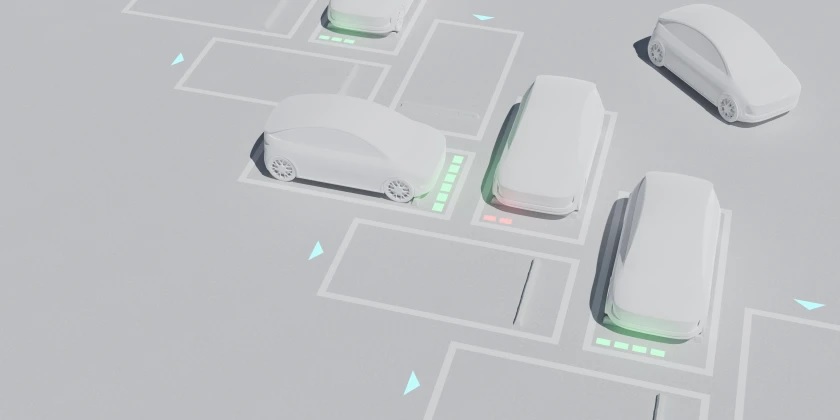Tips to ease the transition of your public fleets to EVs promptly

For public fleets, there is an urgency in transitioning to electric vehicles (EVs) due to federal, state, and local mandates targeting the reduction of greenhouse gas emissions. Fleet managers must work proactively to prepare for these changes. Transforming public fleets to EVs also influences wider adoption throughout communities, demonstrating the value and reliability of EVs.
Let’s explore the key steps to making this transition promptly.
Project future EV adoption targets
Fleet managers must set clear EV adoption goals that consider future trends and policies. As a first step, analyze state and national policies that give compliance timelines or targets for phasing out gas vehicles. Factor in projections for when EVs will hit cost parity and when charging networks will sufficiently expand.
To demonstrate the urgency, you can model different scenarios showing rapid versus more gradual infrastructure development. Also, examine the data on your current fleet composition and projected growth. For example:
- Will you add more vehicles?
- Are certain vehicle classes set to expand based on population changes?
- Will use cases change?
Your analysis needs to consider how current vehicles are utilized:
- Average miles driven per day
- Regular routes
- Home base locations
- Specific use cases
These variables help determine the charging infrastructure needs.
With your analyses in place, establish staged benchmarks for moving public fleets to EVs. For example, New York City has set a deadline of July 1, 2025, when procurement of all light- and medium-duty vehicles must be zero emission and a full transition to all EVs by 2035. Heavy-duty vehicles must be 100% electric by July 2038.
Accelerating fleet adoption requires aggressive but achievable goals. Still, this is no easy feat. A recent Government Accountability Office report shows that federal fleets are already well behind schedule in meeting federal mandates. Some agencies have yet to take even the initial planning steps. Several reports at the state and local level show similar concerns. Denver, for instance, states that current and expected rates for purchasing do not put it on track to meet EV goals in 2025 or 2030. Fleet managers must present the data and urge action if government entities want to meet their goals.
Engage stakeholders now
You’ll need buy-in from senior leaders and cross-functional units on accelerated EV adoption goals. By reviewing total cost of ownership projections, fleet managers can showcase how these vehicles save money in the long term despite higher upfront costs. Additionally, highlighting benefits like reducing fleet emissions and maintenance needs helps secure leadership support.
Fleet managers need to work directly with utilities, as they will be essential partners in infrastructure planning. By meeting now, they can assess capacity readiness for supporting car, truck, and bus charging needs. It can take up to eighteen months to build out charging stations and according to some estimates, up to 5 years to upgrade grid capacity to handle significant increases in charging volume.
Most grids can’t handle this transition without upgrades, and there are already questions about this build-out, especially in places like California that already face rolling outages during periods of high heat. Officials estimate that the state must triple its power generation capacity, including rapid deployment of solar and wind, to meet its EV targets. It will also require $50 billion in distribution grid upgrades by 2035.
Work must begin now to hit targets.
Plan infrastructure enhancements
Investing in robust charging infrastructure is crucial to scale the transition to EVs. Fleet managers and government bodies should review policies and regulations to streamline procurement and installation, especially if public-private partnerships are involved in building out infrastructure. In many cases, changes may need to be made to allow for more rapid approvals. A coordinated effort that crosses city, county, and state lines is in order. Coming to an agreement on approval, funding, and regulatory requirements can ease the burden on utilities and accelerate growth.
The list of current projects already stuck in the process is significant. The longer you wait, the farther you go back in the line. Here’s an example of how daunting this challenge is. Of all the proposed projects from 2000 to 2017 to handle current needs, just 21% had been completed by 2022, providing just 14% of projected capacity increases.
Other actions can also help:
- Adding smart charging solutions to leverage dynamic rate adjustments can help prevent overloaded transformers while optimizing charging costs.
- Analyzing fleet telemetry data can model ideal locations for charging depots and help overcome fleet operator concerns about range anxiety.
- Nailing down funding sources, such as public-private partnerships and government grants, can offset infrastructure costs.
Transition public fleets to EVs
Government entities that want to meet their targets and accelerate EV adoption will need to take proactive steps to set the pace. The transition to full electrification of public fleets to EVs is challenging. However, with proper planning—grounded in ambitious goals and broad cooperation—fleet managers can set the tone for wider adoption.
Switching to EVs can feel overwhelming, but you don't have to do it alone. See how cooperative purchasing can ease the transition, expedite procurement, and help you save time and money with easy-to-access solutions.


